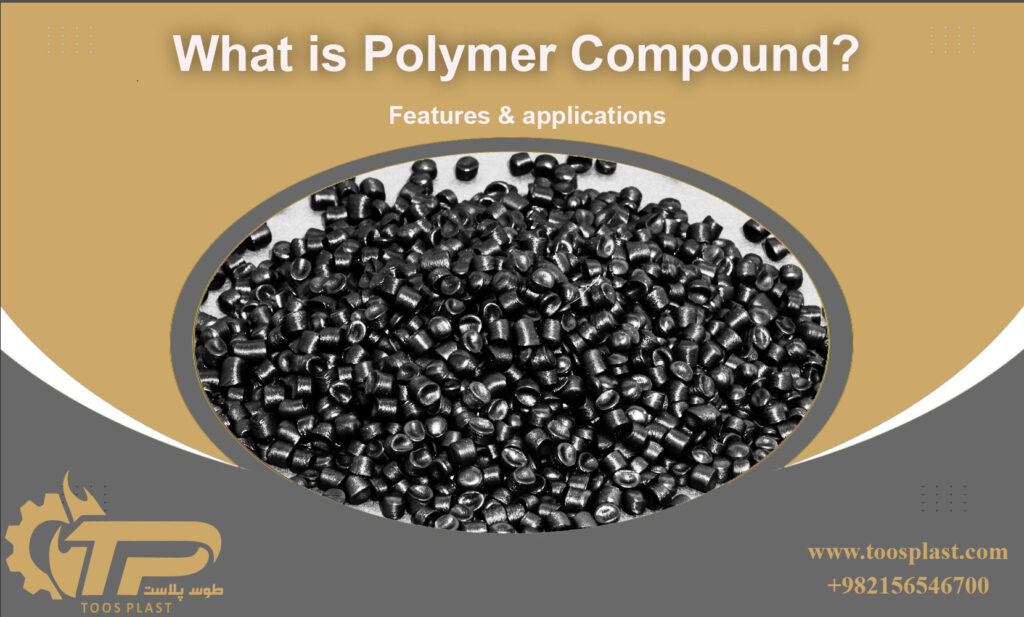Polymer Compound

Polymer Compounds: A Comprehensive and Detailed Overview
Introduction
Polymer compounds are one of the most critical materials in modern engineering and advanced industries, revolutionizing various fields with their unique properties. These materials have found widespread applications in industries ranging from automotive to electronics and even packaging. In this article, we will delve deeper into polymer compounds, their various types, properties, production challenges, and the latest innovations and advancements in this field.
Definition and History of Polymer Compounds
A polymer compound is a composite material made by blending different polymers with specialized additives to achieve desired properties. The production of these compounds has gained attention since the mid-20th century, coinciding with the growth of the plastics industry and the need for lighter, more resilient materials. The history of polymer compound production dates back to the post-World War II era when the need for innovative materials in various industries led to extensive research and development.
Importance of Polymer Compounds in Industries
Polymer compounds have become indispensable in various industries due to their lightweight, high strength, and customizable physical and chemical properties. In the automotive industry, these materials serve as excellent substitutes for heavy metals, reducing vehicle weight, improving fuel efficiency, and lowering greenhouse gas emissions. In electronics, polymer compounds are used as thermal and electrical insulators, playing a crucial role in protecting sensitive electronic components.
Key Properties of Polymer Compounds
One of the primary reasons polymer compounds have become so popular in industries is their ability to improve and adjust mechanical, thermal, and electrical properties. These properties can be tailored according to the specific needs of each industry and application. For example, adding nanoparticles to a polymer compound can enhance its antimicrobial, anti-corrosion, and even electrical conductivity properties. This flexibility allows engineers and designers to create materials precisely suited to the requirements of their specific projects.
Mechanical Strength: Polymer compounds can achieve exceptional mechanical strength by incorporating materials such as glass fibers. This is particularly important in industries like automotive, where resistance to impact and bending is crucial.
Thermal Resistance: Another key feature of polymer compounds is their resistance to heat. With additives like antioxidants and thermal stabilizers, these materials can be designed to perform well even at high temperatures.
Chemical Properties: Polymer compounds can be resistant to various chemicals, including acids, bases, and solvents. This makes them ideal for applications exposed to corrosive environments.
Electrical and Thermal Conductivity: A growing area of research in polymer compounds is enhancing their electrical and thermal conductivity. By adding metal or graphene nanoparticles, these properties can be improved, making them highly valuable in electronics and energy industries.
Types of Polymer Compounds
Polymer compounds can be categorized into various types, each with unique properties and applications:
Thermoplastic Compounds: These compounds are widely used in industries like packaging and automotive due to their ability to be melted and reshaped. Base polymers such as polypropylene and polyethylene are commonly used in producing these compounds.
Elastomeric Compounds: These polymer compounds are highly elastic and can return to their original shape after deformation, making them ideal for products like car tires and flexible components.
Thermal Compounds: These compounds exhibit high thermal stability and are used in industries where high temperatures are involved in production or application.
Specialized Compounds: In addition to the above, specialized polymer compounds are designed for specific applications. These can include flame-retardant, UV-resistant, and antibacterial compounds, each applicable in fields such as medicine, agriculture, and construction.
Production Process of Polymer Compounds
Producing polymer compounds requires technical expertise and extensive experience in material blending and engineering processes. The main steps in production include:
Selection of Base Polymer: The first step in producing a polymer compound is selecting a base polymer that determines the material’s fundamental properties. Base polymers can include polyethylene, polypropylene, polycarbonate, and more.
Selection of Additives: The additives used in a polymer compound should be selected based on the specific needs of each application. These additives may include reinforcing fibers, antioxidants, thermal stabilizers, and more.
Mixing and Blending: The next step involves combining the selected materials. This process can include mixing, melting, and extrusion to ensure uniform distribution of additives throughout the base polymer.
Shaping and Processing: After blending, the polymer compound is shaped into its final form. This process can involve extrusion, injection molding, or other methods, depending on the final product.
Testing and Quality Control: Finally, the finished product must be tested for quality and performance. These tests may include assessing mechanical, thermal, and chemical properties to ensure the polymer compound meets the desired standards.
Diverse Applications of Polymer Compounds
Due to their versatility and customizable properties, polymer compounds are used in numerous industries:
Automotive: In the automotive industry, polymer compounds help reduce vehicle weight, improve fuel efficiency, and lower greenhouse gas emissions. Components such as bumpers, dashboards, and interior parts are widely made from these materials.
Electronics: In the electronics industry, polymer compounds serve as thermal and electrical insulators and are used in components such as mobile phone cases, televisions, and laptops.
Packaging: In the packaging industry, polymer compounds are popular due to their lightweight, impact resistance, and ability to preserve the properties of packaged goods.
Medical: In the medical industry, polymer compounds are used to produce medical equipment such as syringes, blood transfer tubes, and surgical device components. These materials are ideal for this sensitive industry due to their antibacterial properties and sterilization capabilities.
Construction: In the construction industry, polymer compounds are used to produce insulation materials, pipes, and decorative components. These materials are highly resistant to environmental factors like water and corrosion, making them ideal for construction applications.
Challenges and Recent Innovations in Polymer Compound Production
Despite their numerous advantages and wide-ranging applications, producing polymer compounds presents challenges. Among these are the correct selection of additives and determining their optimal ratios. Additionally, finding ways to increase the recyclability of these materials to reduce environmental impact is another major challenge in this field.
Recent innovations in polymer compound production include using nanoparticles to improve mechanical and thermal properties, developing biodegradable polymer compounds to reduce environmental burden, and designing materials with self-healing capabilities to increase product longevity. These innovations highlight the importance of continuous research and development in this field and the ongoing efforts to enhance the features and applications of polymer compounds.
Future of Polymer Compounds
The future of polymer compounds is closely tied to technological advancements and the growing demands of various industries. With the development of new technologies such as 3D printing, the use of polymer compounds in producing complex and customized components is expected to rise significantly. Furthermore, with increasing environmental awareness and stricter regulations, there will likely be a greater focus on producing biodegradable and recyclable polymer compounds.
Conclusion
Polymer compounds are one of the key materials in advanced industries, playing a critical role in the development and advancement of modern technologies. Given their unique properties and customizable features, the use of polymer compounds is expected to continue growing in the future. On the other hand, the challenges and issues related to the production and recycling of these materials require further research and development to ensure they remain a sustainable and efficient option in various industries. At Toosplast, we take pride in offering premium quality polymer compounds tailored to meet the specific needs of our clients across various industries. With a commitment to innovation, precision, and sustainability, our products are designed to exceed the highest industry standards. Whether you are looking for thermoplastic compounds or specialized polymer materials, we provide customized solutions that deliver exceptional performance and reliability. Partner with us to experience unparalleled quality and expertise in the world of polymer compounds, where every product is crafted with care to ensure your success.
- Published in Uncategorized

